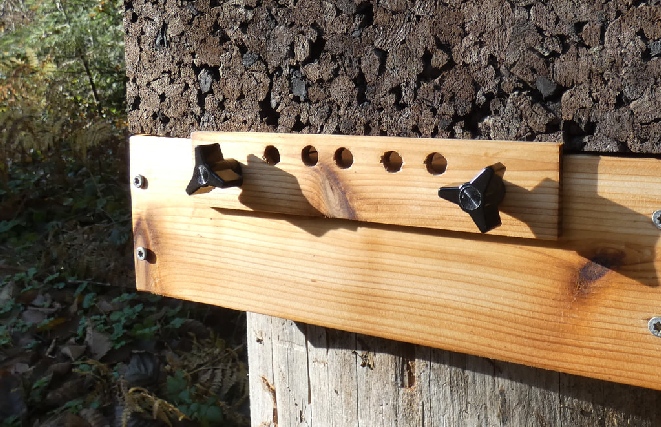Cork hive cover for bees

Cork hives are an innovative approach to bee breeding that promotes the health of bees while providing all the benefits of modern beekeeping. Wild honeybees typically colonize tree hollows – voids left in trees by woodpeckers, fungi, or other accidents. These depressions have thick, rough walls and are usually about 40 liters in volume. The most commonly used material in this case is expanded cork, although technical cork is also used. In Portugal, you can also often meet the so-called cylindrical cork hives made of cork oak bark.
Cork hives mimic those on trees as much as possible. Natural, additive-free cork cladding provides insulation for four inches of wood, yet is lightweight. Rough interior walls encourage bees to coat their home with immune-enhancing propolis. The hive’s small size is ideal for supporting bee health, as confirmed by researchers such as Thomas Seeley.

Cork hives have all of these bee-friendly benefits and much more, while also being adapted to the Langstroth frames used by conventional beekeepers. The research of Italian scientists has shown that cork hives have a more regular course of the daily internal temperature than wooden counterparts, more efficient winter thermoregulation, shorter time needed to restore the hive temperature after opening (in relation to the breeding chamber).
In the case of the latter, the temperature drop during the extraction of frames (5 min) was smaller in cork-wooden hives as compared to wooden hives. Due to the lower heating needs, less honey was consumed by the families during the winter months, with an average of 3.5 kg of honey per hive saved under Mediterranean conditions. Below is a link to a full description of their research: https://oppla.eu/casestudy/20812

The results of Italian research suggest the use of cork to build modern, but at the same time traditional, wooden and cork hives. This could contribute to greater economic and environmental sustainability of multifunctional Mediterranean pastoral systems, but also to a reduction in the amount of fossil fuel-based insulation materials, especially where winter temperatures may be lower than those experienced in this study.
The use of cork in the construction of modern hives seems to be promising and may constitute an interesting synergy between beekeeping and forest management with cork oak. Considering the mild environmental conditions in the experimental site, interesting prospects for increasing honey production under more severe climatic conditions can be expected.
